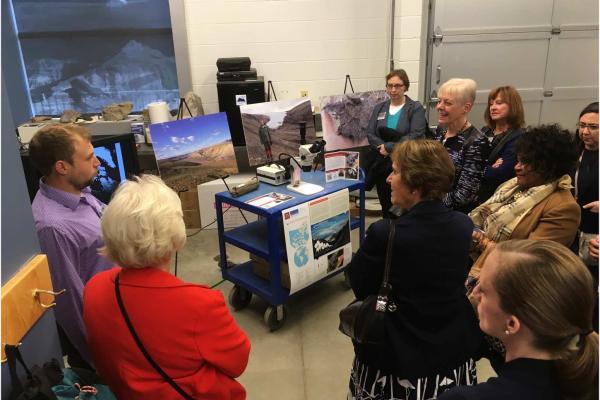Best Practices for Hosting Public Tours of Research Facilities

In a recent article published in the Journal of Museum Education, Joseph Helterbrand, Research Centre Outreach Coordinator within the Office of Research, Agri-Food Partnership at the University of Guelph and former Student Program Coordinator for the Byrd Center's Education and Outreach (E&O) Team; Jason Cervenec, Education and Outreach Director at the Byrd Polar and Climate Research Center; and Courtney Price, Community Engagement Liaison in the College of Arts and Sciences at The Ohio State University present a comprehensive set of best practices for designing and delivering impactful public tours of research facilities.
Drawing on the Byrd Center's experience with more than 62,000 visitors since 2012, the authors identify seven "best practices" designed to enhance visitor learning, streamline operations, and foster long-term community engagement.
Established in 1960, the Byrd Center is now an interdisciplinary hub for 16 research groups dedicated to advancing knowledge of polar and alpine environments, as well as climate systems on global, regional, and local scales. The Byrd Center also features a specialized library, a polar archive, facilities for preserving ice cores and polar rock samples, and the office of the State Climatologist of Ohio.
The Byrd Center’s tour program has afforded opportunities to engage community members and potential collaborators, showcase ongoing research, satisfying federal agencies’ broader impacts requirements, attract supporters and donors, and educate local and regional audiences about climate change. The E&O Team has adapted numerous techniques honed by a team delivering campus tours to prospective Ohio State students.
Key recommendations include designing modular tour routes tailored to diverse audiences; crafting scripted narratives that balance technical accuracy with accessible storytelling; and incorporating dynamic, hands-on demonstrations to bring science to life. The paper also emphasizes the importance of well-trained guides, whose personal enthusiasm and subject-matter expertise create authentic human connections and structured feedback mechanisms that enable organizers to refine tour content and logistics continually.
The authors emphasize that these evidence-based practices improve visitor satisfaction and serve as a scalable model for other universities, museums, and research institutions looking to translate complex science into engaging public programming. By combining collaborative planning, iterative improvement, and a clear focus on visitor experience, the Byrd Center's framework demonstrates how thoughtfully designed tours can broaden the impact of scientific research and build lasting partnerships between scientists and the communities they serve.
Learn more about this published paper on the team's outreach efforts.
